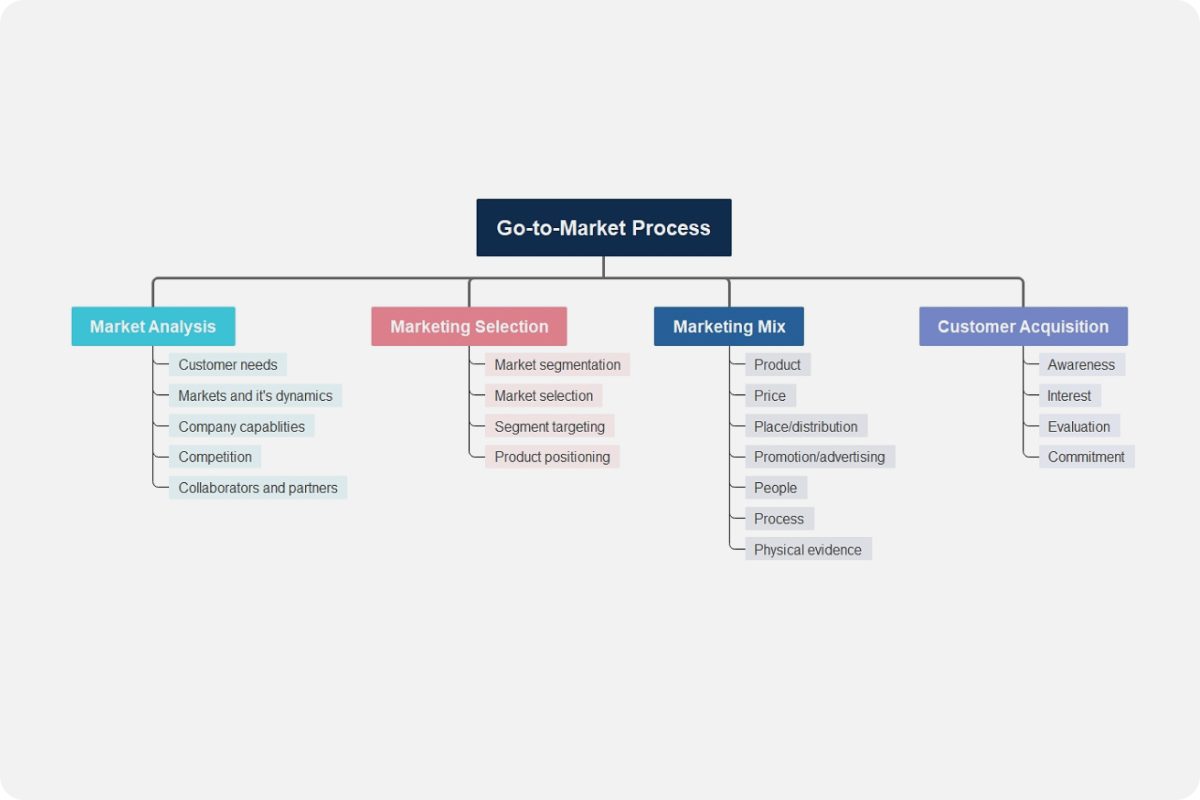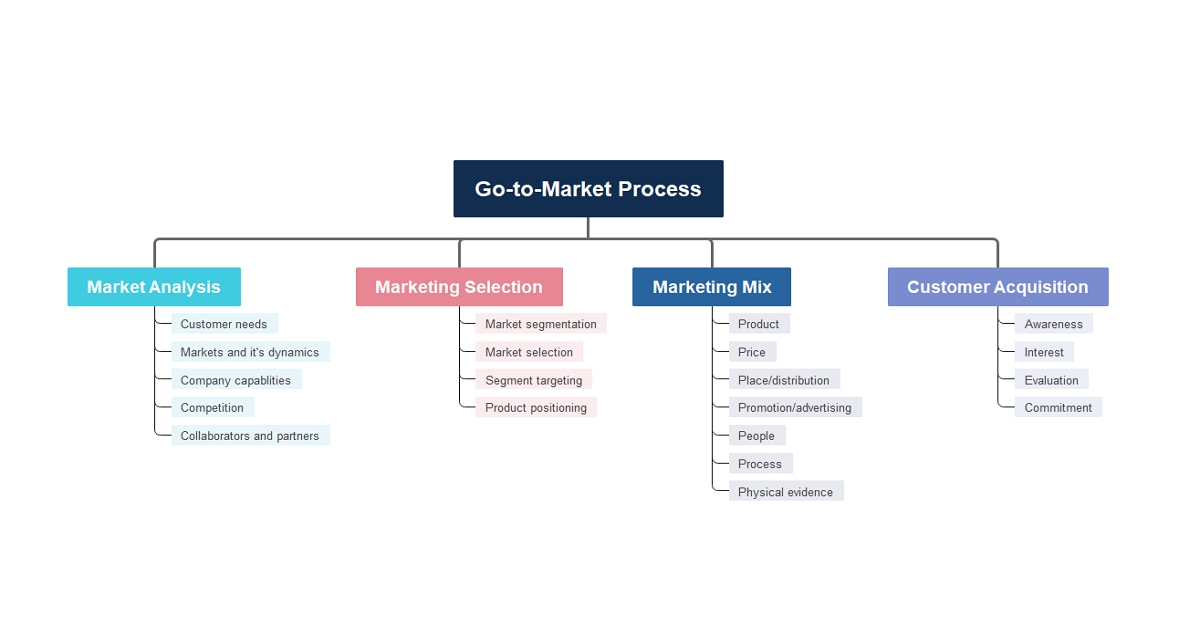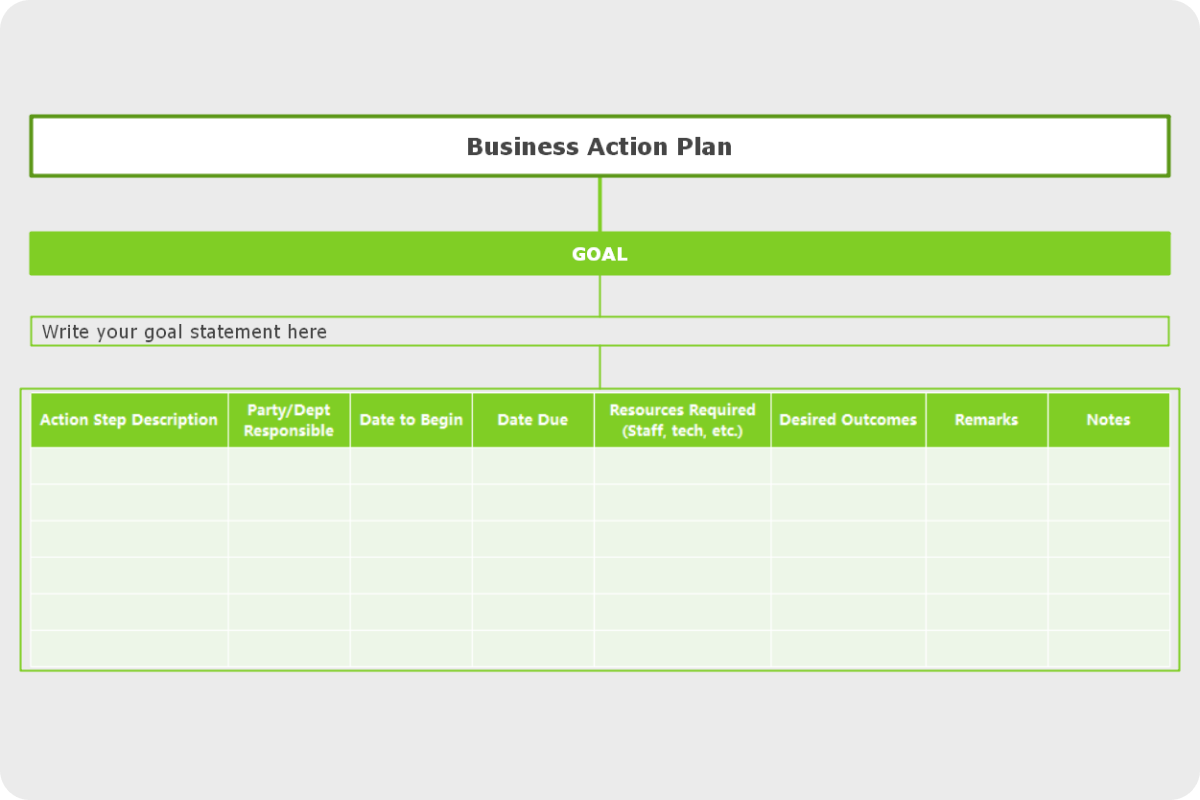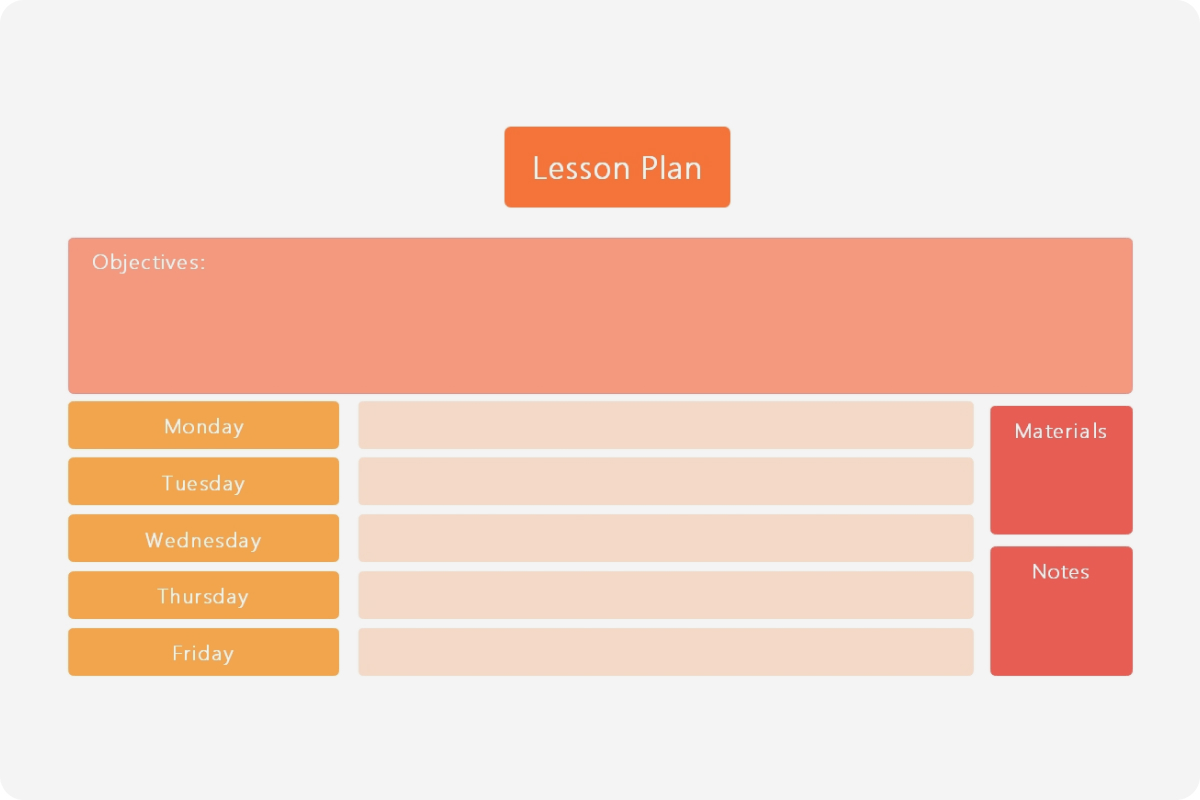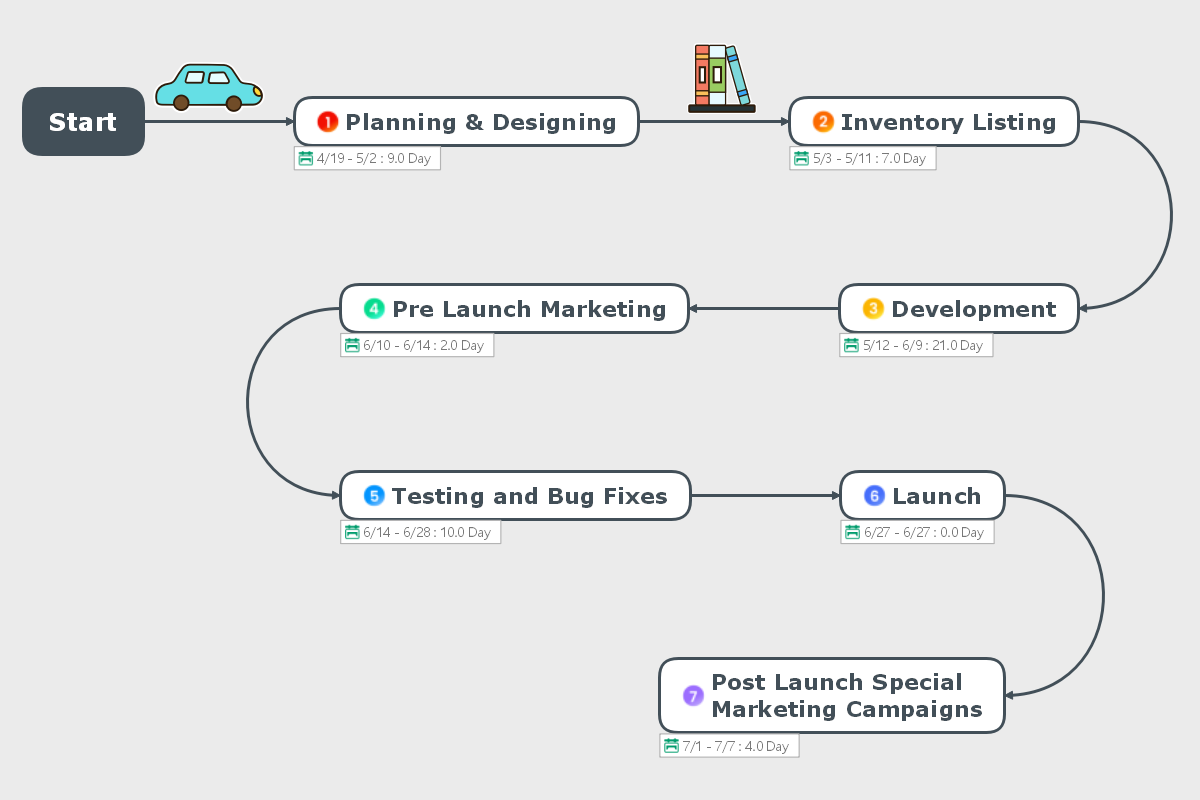About the Go-To-Market Strategy Templates
Strategically plan how your company will launch the product in the market.
A go-to-market strategy template is a set of guidelines that businesses follow while launching a new product. The GTM strategy framework differs from company to company, but it usually comprises a business plan that details the target demographic, a marketing plan, and a sales strategy.
The plan of a business, employing both internal and external resources, to offer its unique value proposition to consumers and gain competitive advantage is known as go-to-market or go-to-market strategy. Every product and market has its own set of problems and possibilities, so it's critical to carefully plan your go-to-market strategy for each.
Why is it so important to have a go-to-market strategy in place?
Any startup must have an excellent go-to-market plan. Because startups develop quickly, you must make some decisions that might have long-term consequences. Your teams can't afford to be out of sync when resources are few. You risk wasting valuable time and money if one team follows a different playbook than the others. A go-to-market strategy template may help you align your teams so that sales, marketing, product development, and engineering are all focused on the same goals.
Large firms with established goods may base their GTM strategy on effective communication and branding for new markets. An improper GTM strategy can result in years of slower development for those starting a new firm due to poor pricing, marketing channels, and sales procedures.
What are the major components of a go-to-market strategy?
The go-to-market strategy is a broad idea that needs a great deal of consideration and planning. A GTM strategy can be applied to a company or a brand; however, it is most commonly used for products. It's critical that company workers (particularly those in sales and marketing) understand the GTM strategy and are taught how to use it to identify market opportunities based on how the firm's products fit into the market.
Following are some of the major components of a Go-to-Market strategy:
- Customers
- Company
- Competitors
1. Customers
Customers are your target market and the driving force behind your company. First, determine who your target audience is. Their needs should be met by the product you want to launch. Using in-depth interviews and surveys, you can collect insights from your target audience. The questionnaire will include questions that will be related to the reasoning of buying the product and demographic details with questions related to their incomes.
You can also use alternative methods to learn more about your customers: go through extensive online research and read papers on customer's behaviors and theories. You can also look up customer profiles on Twitter, Instagram, or Facebook to see what they publish, discuss, and subscribe to. After gathering the necessary information on your clients, you may launch a social media campaign requesting contact information such as email and contact number. This initial step of gathering data on your target audience will help you to keep in touch with your customers by providing extra resources like discount coupons and ad campaigns to engage the target audience.
2. Company
To make your product or service profitable in the market, the business must define its goal and identify its assets, ambitions, capabilities , and skills. These variables will decide whether your company's focus will be on pricing leadership or operational efficiency. The strong values contribute to the long-term consistency of the marketing strategy. The product is an essential aspect of the go-to-market strategy. Building a great product takes a wide range of abilities, curiosity, skill set , and imagination.
To create a successful product, a company must go through trial and error while keeping in mind the ever-changing technology, market, trends, group dynamics, and consumer demands. Pricing the product Is also a very important part for a company when launching the product. To determine the lower bound in order to price your product precisely, you must determine the product cost.
3. Competitors
To differentiate yourself from the competition, develop a distinct value proposition and do a competitor analysis. Product portfolios, capabilities, how they portray their company in the market, their mission, and successes should all be included in your research. Your rivals' websites, annual reports, and newsletters are all good places to start learning about them. You can also go through their reviews and see what their target audience likes or wants in their products. You can easily add them to yours and satisfy your customers. You can also do a SWOT analysis on your competitors, and analyzing their pricing and media strategies is one of the best ways to strategize how you need to launch your product.
How to conduct an effective go-to-market analysis?
To conduct an effective go-to-market analysis, it is essential to follow through these easy steps that can help you understand your target audience, market trends, products fit in the market, competitors, its demand, and supply better. These ten simple steps will help you avoid costly mistakes while launching a new product or conquering a new market sector.
1. Identify The Target Market and Buyer Personas
A buyer persona is a fictitious figure who, based on research, has the attributes of the perfect client. The name, behavioral qualities, demographic information, and hobbies are all characteristics of a buyer persona. To develop an audience persona, you'll need to follow a few easy steps. There are tools like Google Analytics, available data on customers, and social media analytics. You should conduct audience research based on age, geography, preferences, spending habits, and problems to better rule out your buyer's persona. Then figure out what issues your target audience is attempting to address and what help you can provide to gain the attention of your target audience.
2. Research the demand
After you've created the buyer personas, you'll need to figure out what their problems are and whether your product or service can meet their demands. At this phase, you should evaluate the value of your product as well as the pain issues that your buyer personas encounter on a regular basis. Furthermore, you must consider the larger picture and conduct research on the industry's challenges as well as on your target audience the influence your product on them. Then, research your competitors and describe the aspects of your product that set it apart from the competition. It is critical to understand what the target audience loves and hates about available products or services like yours on the market.
3. Develop your messaging
Messaging is a collection of important points that your company uses to describe themselves and the value they give to their consumers. What and how you communicate about your company, or the product, or the service you are providing is referred to as messaging. Your message should describe what value you give, why your service and product is unique compared to those that are already in the market, and what issues you address in order to convey the core concept about your product or service to potential consumers. Establishing an emotional connection with your customers by addressing their wants and aspirations is very important if you want to stay long-term in the market.
4. Understand your customer's journey
From a business standpoint, the buyer's journey is referred to as a funnel. There is a lot of general curiosity at the top of a typical sales funnel. As possibilities slip out of the pipeline, it steadily narrows. The purchase process is linear from your customer's perspective. It will go something like this:
- The buyer recognizes a business issue and does research on the subject.
- The buyer creates a shortlist of possible options.
- The list is refined by speaking with solution provider sales teams and evaluating product until the buyers make a decision.
5. Outline the Pricing Strategy
The worth of your product is communicated to your customers through pricing. The cost may represent the notion that your product is unique and, as a result, is more expensive. On the other side, a lower price may provide you a competitive edge over your competitors. Pricing is determined by the target market, competition, and other factors such as public relations and marketing. To determine whether pricing is acceptable, consider the demands of your customer personas and whether it meets their objectives.
6. Create a Marketing Plan
Building brand recognition is a vital step in attracting the attention of your target audience. Branding, lead generation, content development, website, public relations, conferences, and advertising are all included in this stage. Social media, campaigns, emails, Facebook advertising, conferences, billboards, and television commercials are all common ways to reach the target market. When potential customers show interest in the product, it's time to move on to the next level and give instructional resources or free trials to entice them to make a purchase.
7. Create Content
The content informs clients about the issues you tackle while also raising brand recognition. Customers will be able to locate your product's content just by using a keyword search. As a result, it will improve your visitors and revenues. Year after year, the need for video content grows. Videos are the most widely circulated and shared on many apps. Video content published on social media platforms may help your company improve engagement and convert users. To advertise your business, you may make a variety of videos to boost sales and attract new buyers.
8. Customer Support
Customer service converts new purchasers into loyal consumers. You should provide nice customer service to generate loyalty and make the buyer feel unique. It's critical to consider the services you'd supply to your customers to assist them in using your products and customer support personnel. Consider monitoring and responding to questions and complaints via social media channels.
